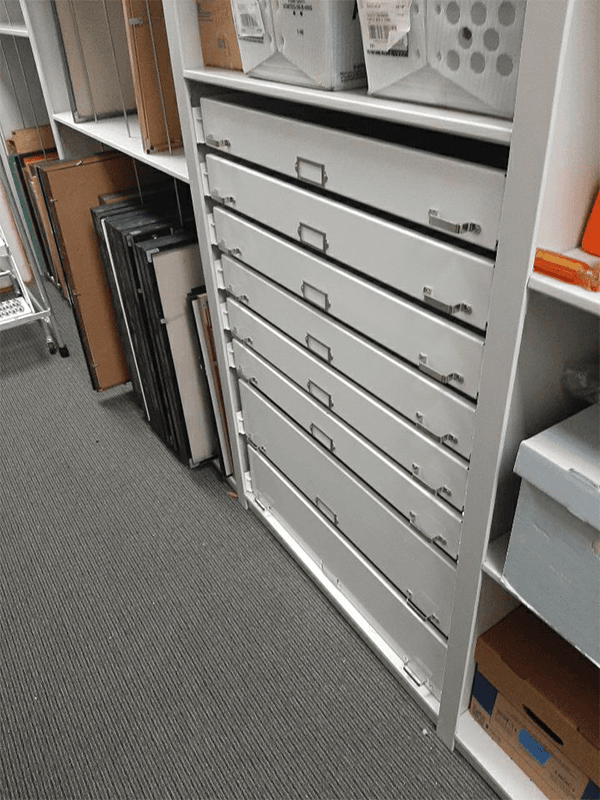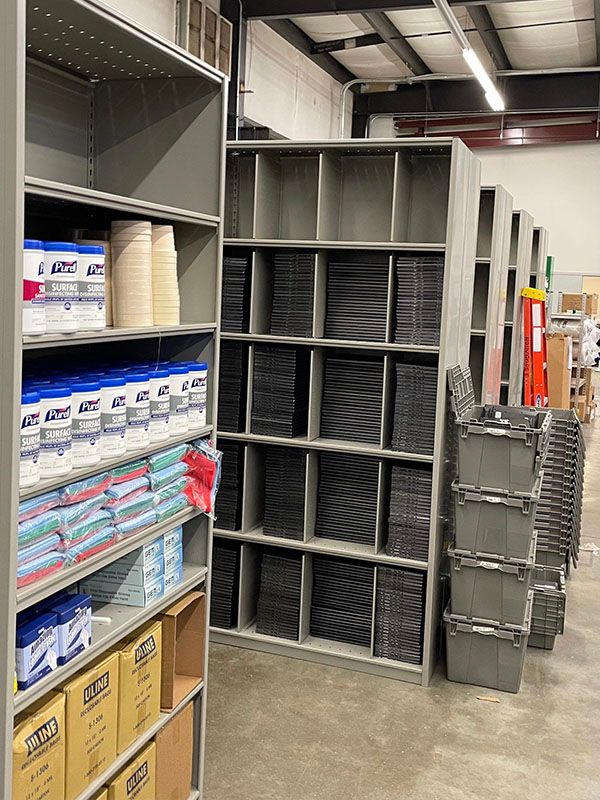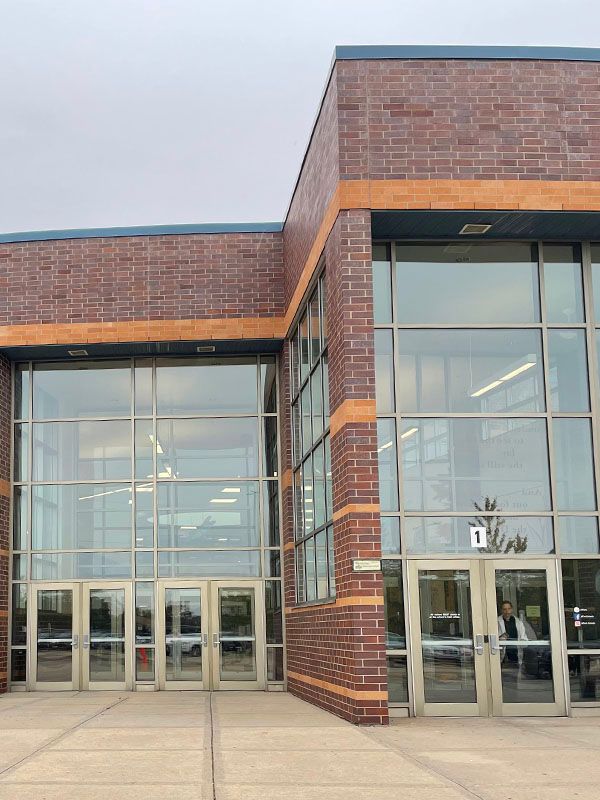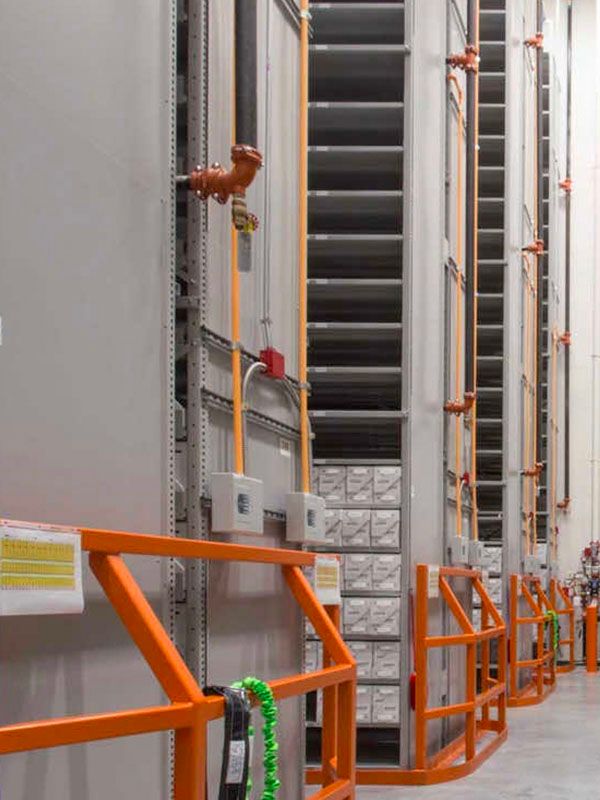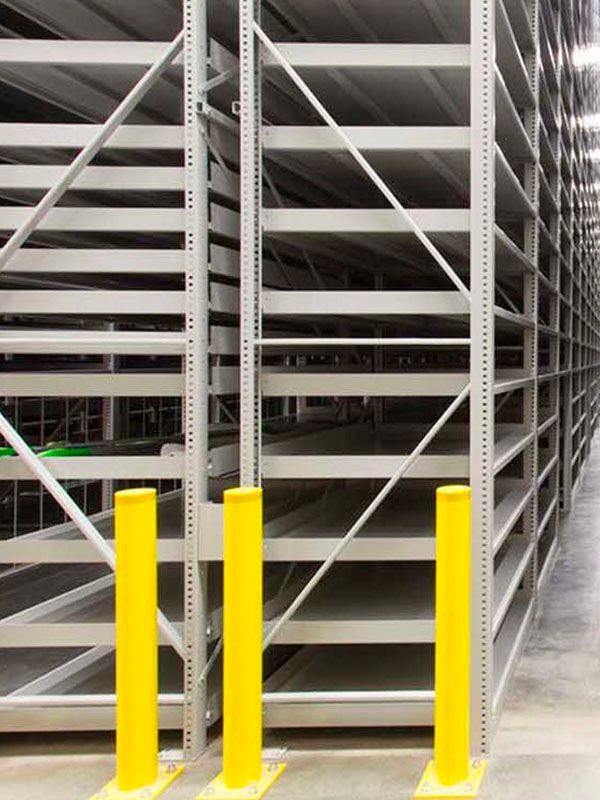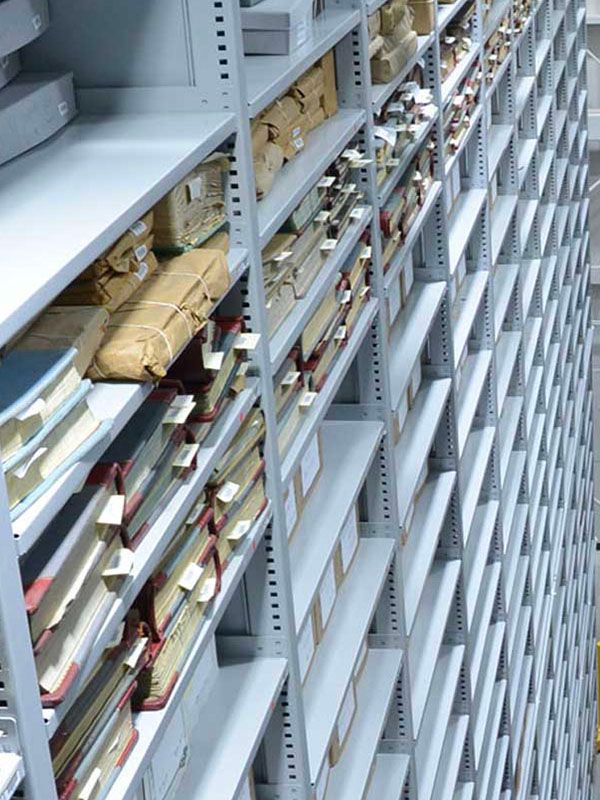Austin, Texas
Off-Site Shelving Helps Library Repurpose Space on Campus
The University of Texas at Austin expands its off-site shelving facility in stages to help make space for modern library design.
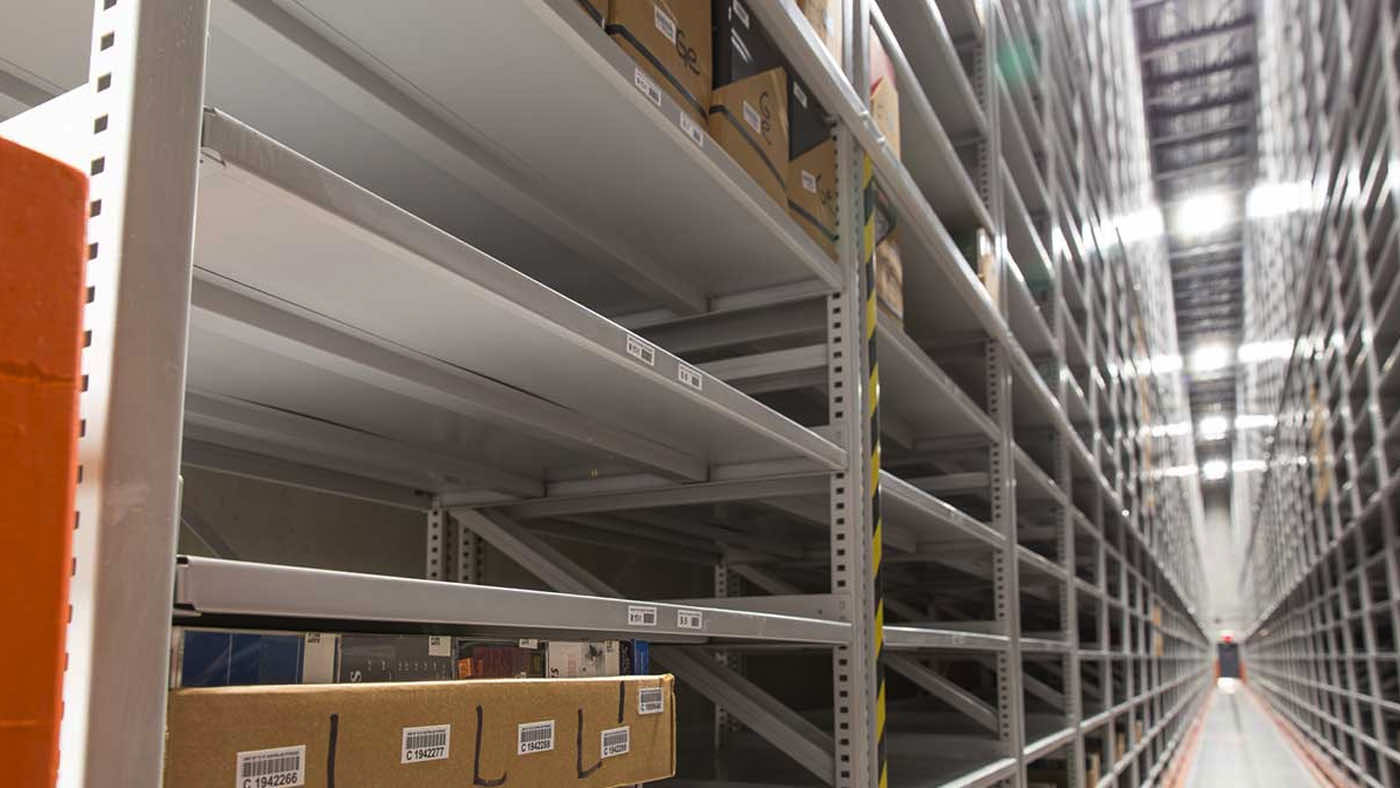
Teaching an old building new tricks
The interior of the Perry-Castañeda Library at the University of Texas at Austin has recently been repurposed to create a more modern environment for teaching and learning. The building was first opened to the public in 1977 and was designed in the brutalist style, with a stark concrete exterior. Inside, the building had multiple floors of book stacks and few spaces for group work or collaboration.
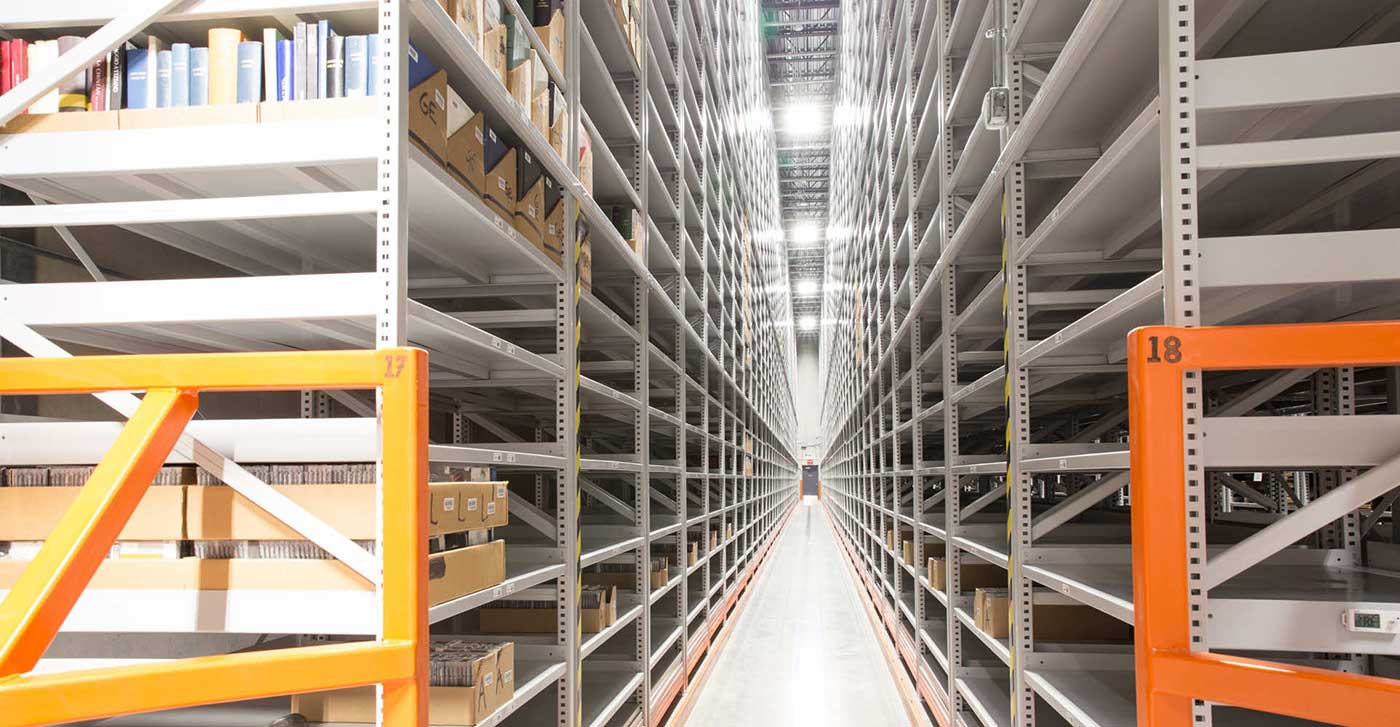
Decades later, as students began to seek more modern workspaces, the library system’s leadership recognized the need for a more open layout, spaces for meetings and study groups, contemporary furnishings, and room for innovative technology. “Space is an important physical asset in the library, and there are a lot of competing interests,” said Chris Carter, Director of Organizational Effectiveness for the UT libraries.

Making way for change
The library system’s leadership had big ideas about how to renovate the building, and these plans were made possible by moving a quarter of the library system’s printed materials off-site. The university had already constructed an off-site preservation storage facility. Library leadership worked with stakeholders to develop a long-term plan for moving books from campus to the facility, with the goal of maintaining accessibility to library materials while freeing up space on campus for more modern uses.
As the library system’s collections have grown, so has the facility: seven off-site modules are planned through 2050. The university’s planning and design teams worked with Spacesaver’s local representatives, along with Spacesaver’s project management and engineering teams, to design and install an XTend® High-Bay-Shelving System that perfectly fits the space and complies with building codes.
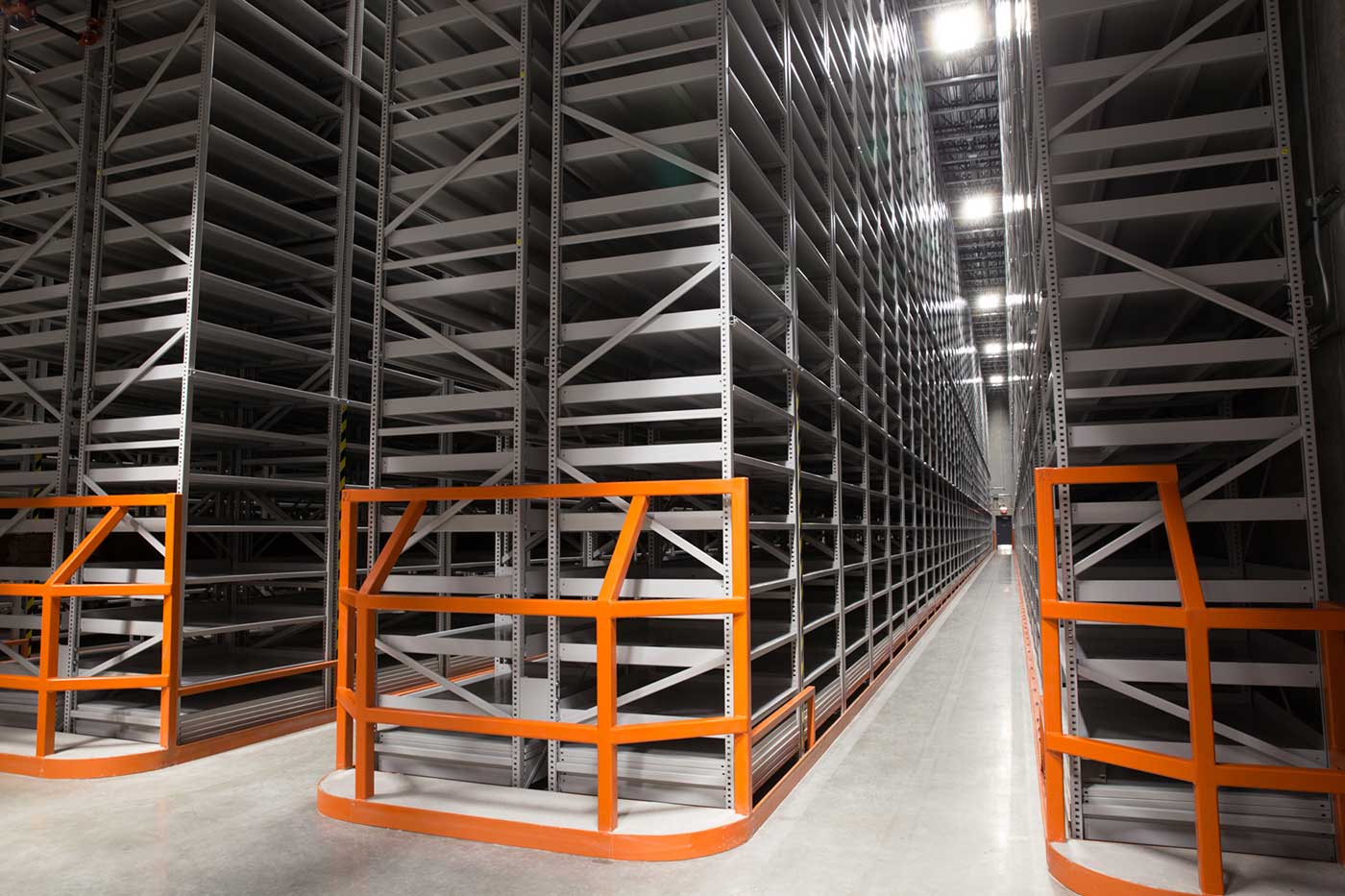
"Our goal is always to create the best spaces to be a successful student and scholar at UT. We need to provide spaces that students actually want to use, that meet their current needs, and encourage them to stay on campus to study and build connections with other students."
- Chris Carter, Director of Organizational Effectiveness for the UT libraries
More space for learning and collaboration
The newly renovated library features a variety of areas that promote modern scholarship.
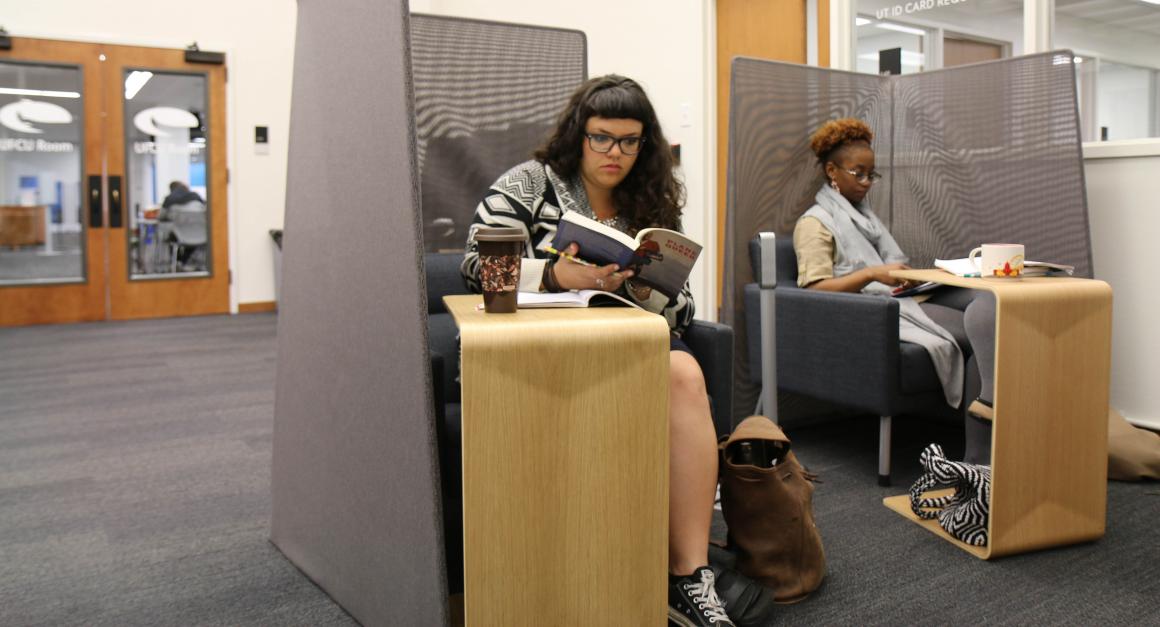
Scholars Commons
The library’s second floor is home to the data lab, a graduate student lounge, collaborative study rooms, and a silent study area.
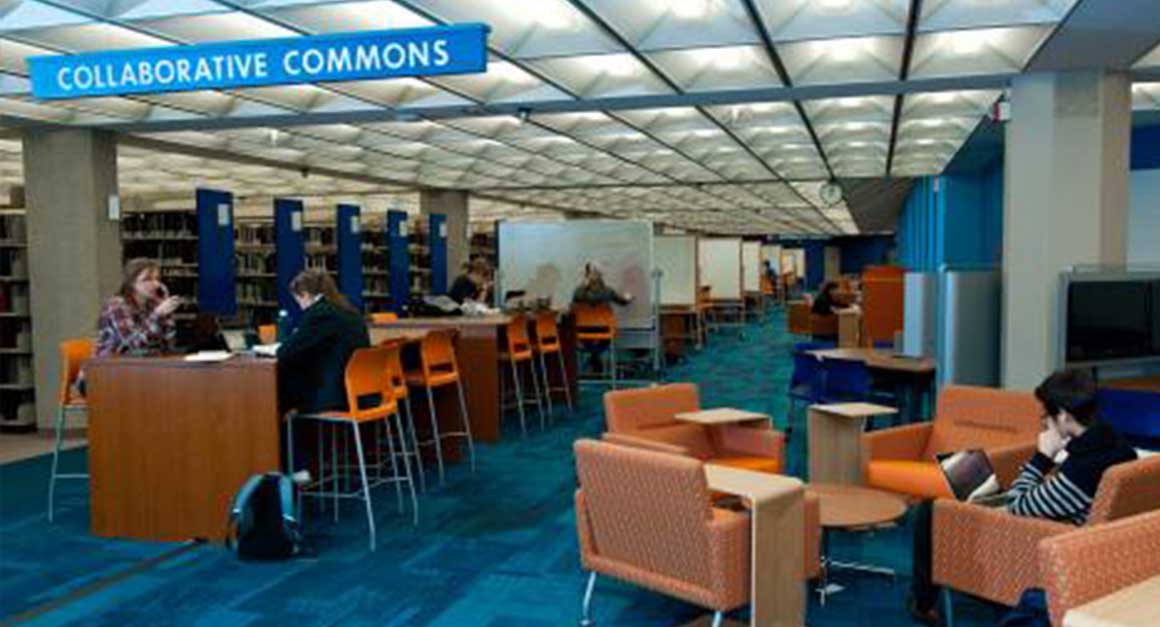
Collaborative Commons
This is a conversation-friendly collaborative study area that features movable furniture, whiteboards, and Airmedia.

Learning Commons
Featuring a variety of technology-enabled classrooms and study spaces, the Learning Commons is also home to the Public Speaking Center and the Writing Center. This combination of learning support benefits students in a wide range of learning styles.

STEM Learning Spaces
These small, flexible study areas seat 8-12 people and can be booked for exam reviews or study groups. An abundance of whiteboard space and electrical outlets, combined with fast, ubiquitous wifi make these spaces very popular with students.
Download Our Case Study
Do you need more workspaces in your library? See how the University of Austin Texas was able to work with Spacesaver’s local representatives to come up with a solution to make more room for teachers and students.
Download Our Case Study
Do you need more workspaces in your library? See how the University of Austin Texas was able to work with Spacesaver’s local representatives to come up with a solution to make more room for teachers and students.

Moving Staff
With intense competition for space on campus, plans are underway to rethink the locations in which library staff are housed. “Our staff are perhaps our most important asset, and the way we work is changing.” Carter said. “We can work in many locations while still remaining connected to each other.”
For instance, books that need repair are generally worked on in the main library, as they have been for around 40 years. Carter said the next high-bay module could include new workspaces for conservators and other staff who work more behind the scenes than in front of the public. “There’s no driver to move them today, but we recognize that a lot of our back-of-the-house print tasks can be consolidated at the off-site facility and that that would be more efficient for the university,” he said.
"We describe it as a collective collection. In the past, it made sense to have copies of the same thing physically located all over the state because when people wanted to get it, they would just walk in and find it. Now with digital copies often available that’s not always the case, so we’re developing a shared statewide collection. Given the digital options, this approach preserves our print materials, keeps them accessible, and frees up resources."
- Chris Carter , Director of Organizational Effectiveness for the UT libraries
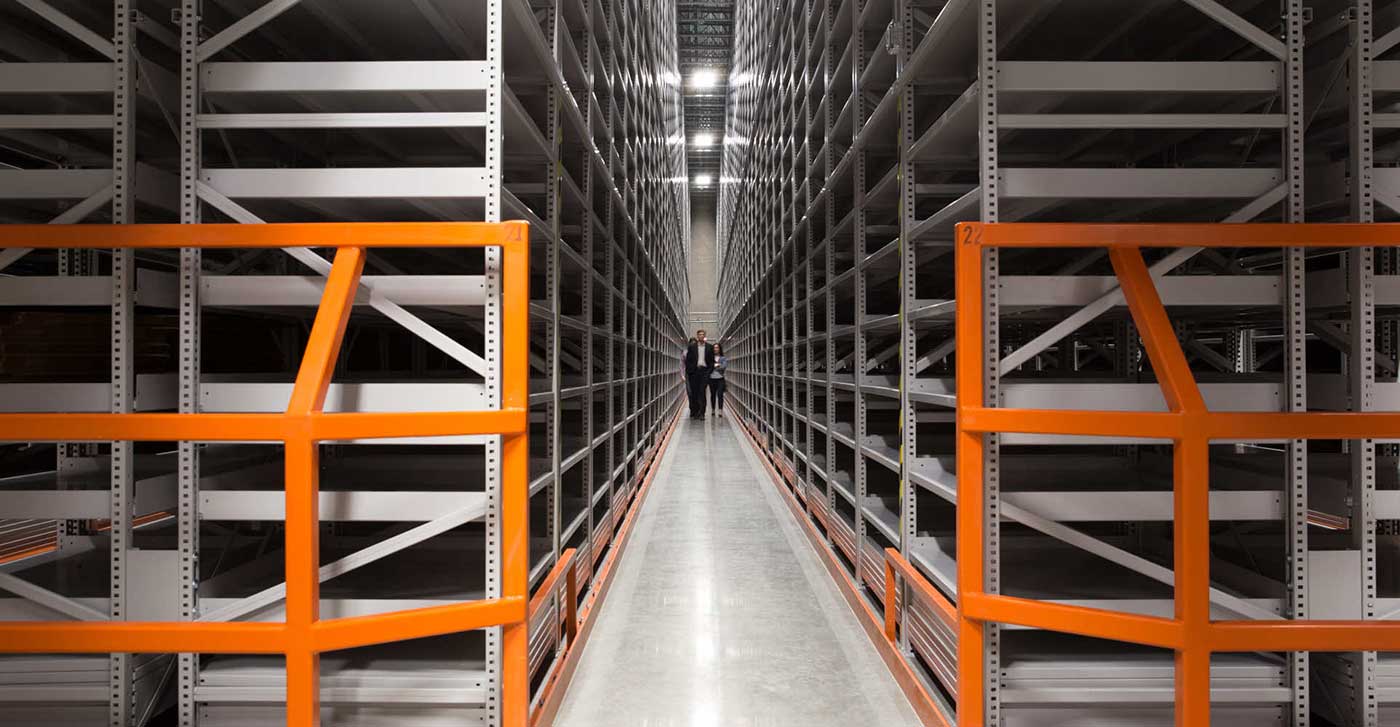
Building Partnerships
Not only is the university’s library system re-thinking space on campus, it’s also forming partnerships with other institutions in hopes of creating a shared collection that can be accessed by researchers around the state.
Ready to learn more?
Spacesaver’s XTend specialists can help with all aspects of planning and implementing a high-bay shelving system. Our in-house engineering and project management teams, along with our network of local distributors, offer years of experience and unparalleled expertise in high-bay shelving design. We look forward to meeting you and working with you on your project.
Considering a High-bay Facility?
When building an off-site library storage facility, consider storage solutions early in the process. It is well worth the effort, as the building’s footprint and purpose can be tied directly to the way shelving is implemented.
Considering a High-bay Facility?
When building an off-site library storage facility, consider storage solutions early in the process. It is well worth the effort, as the building’s footprint and purpose can be tied directly to the way shelving is implemented.

